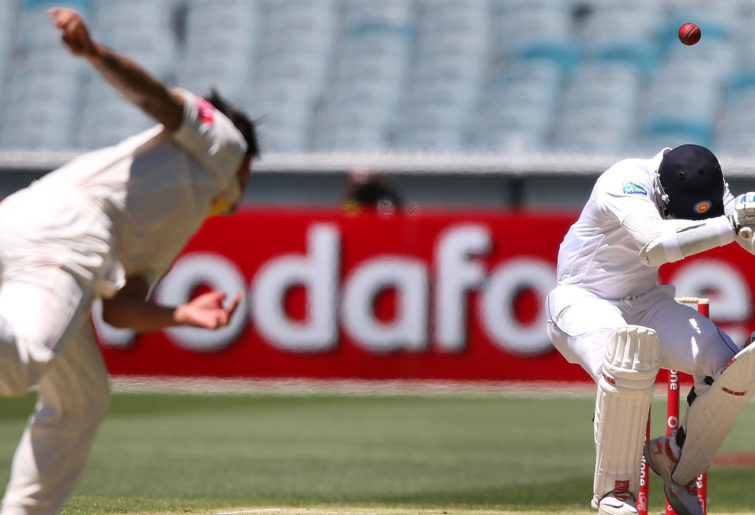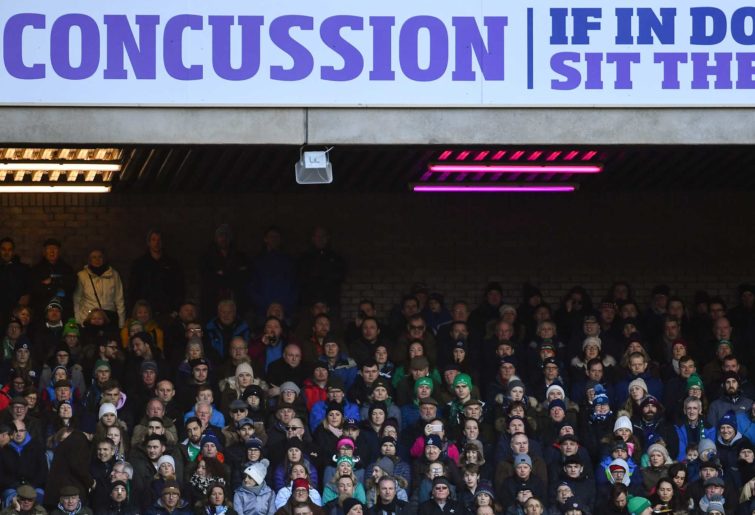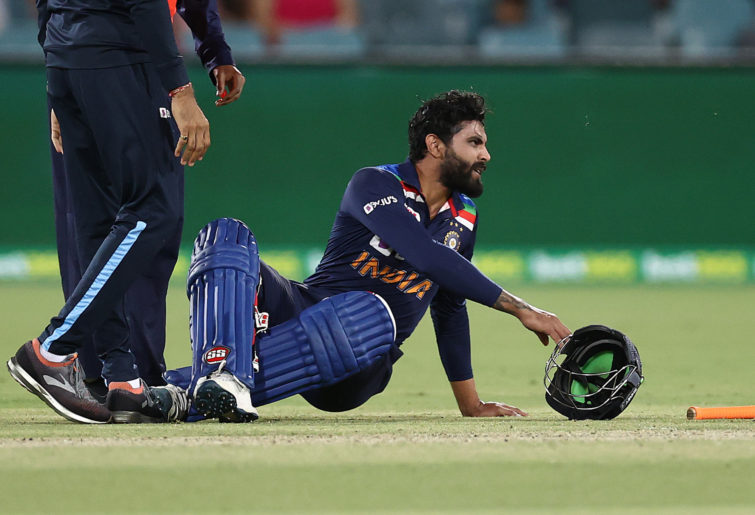If the heads of Australia’s major football codes felt any trepidation about being held to account after they first became aware of public hearings into concussion and repeated head trauma in contact sports, it’s hard to imagine them being concerned now.
A senate committee that on Wednesday concluded its fourth day of public hearings, in Melbourne, is due to report back to Parliament on the 21st June. Based on the submissions provided and the exchanges witnessed throughout the process, they may well have a sense of the outcome being little more than validation of the status quo.
But will the committee, despite its at times haphazard sense of order, deliver them a surprise?
Submissions were received across four days from a number of what can loosely be described as ‘victims’ and their family members; too many to mention by name. All were harrowing, deeply personal accounts, most not seeking retribution or to lay blame, all of them wanting the sporting organisations to genuinely care about participants.
The key word there is ‘genuine’. There were, at times, strong ‘big tobacco’ vibes given off by representatives of key sports and their legal counsel, as motherhood statements rolled off the tongue as easily as Nick Daicos found the ball during Tuesday’s Collingwood versus Essendon Anzac Day blockbuster.
It was a theme picked up by Concussion Australia CEO, Brendan Swan, in the Brisbane leg, who expressed his view that the major sports were more concerned about legal liability than player health.
That may or may not have prompted the AFL’s Andrew Dillon to lead his submission stating that “the safety and health of players is a key focus for us”, albeit immediately before using the term “head knocks”; a descriptor universally panned by medical experts and advocates working in the field because of how it is often interpreted as trivialising brain injury.

Is the AFL doing as much as other sports on concussion? (Photo by Michael Dodge/Getty Images)
On a roll, Dillon then affirmed how, “the AFL is committed to transparency”; a shock no doubt, to anyone with more than a passing knowledge of how things work in practice, over at AFL HQ.
At least the AFL were man enough to front Dillon, Executive General Manager Football Operations, Legal and Integrity, and said to be at the front of the line to take over the CEO role from soon to be departed Gillon McLachlan.
Neither hide nor hair was seen of ARL Commission Chairman Peter V’Landys or NRL Head of Elite Football Operations, Graham Annesley during the Sydney sessions; V’Landy’s perhaps pre-occupied with not giving rugby union any free publicity, or deciding on which four clubs are least likely to embarrass the league if selected for next years’ proposed Las Vegas junket.
One wonders what will be made of all of this when, one day in the future, the transcripts are dug up from the archives?
Sports Medicine Australia CEO Jamie Crain set the tone early, sitting on the fence with respect to CTE, saying that their “broad position hasn’t changed” (the link between sports related concussion and CTE remains tenuous), and that “there’s still a lot of work to do.”
Perhaps that’s where Rugby League Players’ Association Operations Manager Jamie Buhrer took his cue from; when asked if he acknowledged the existence of CTE, answering “I don’t think I’m at liberty to say.”
That was enough to put all subsequent witnesses on notice for when they were asked the same question, although when pressed if the AFL had a specific policy on CTE, General Manager Legal and Regulatory, Stephen Meade, replied “I don’t think we need to have a policy which shows how seriously we take CTE in our sport.”
It was a shame that none of the senators thought to ask Meade, policy or no policy, to specifically outline what actual measures the AFL was taking to demonstrate just how seriously they do take CTE.
Buhrer also raised eyebrows when, after being asked if the fact that the RLPA’s medical advisor, Andrew Gardner, being on the payroll of the NRL, represented a conflict of interest, he replied, “I don’t think so.”
By contrast, both Rugby Union Players Association CEO Justin Harrison and AFL Players Association CEO Paul Marsh, were at pains to point out that they were not funded by Rugby Australia and the AFL respectively, but by the players themselves.

A concussion advert during the Guinness Six Nations Rugby Championship (Photo By Ramsey Cardy/Sportsfile via Getty Images)
Marsh however, then went on to contradict himself, explaining how his association “negotiate(s) a share of revenue, the players salary is part of it, and our funding is part of that.” Glad he that cleared up.
What was harder to understand was the AFL Player’s Association’s reluctance to accept responsibility for player education, claiming that their role extended as far as advocacy, but “it’s important that (player education) comes from the governing body.”
One of the most perplexing things to consider in all of this head injury debate is the reluctance and inability of the player’s associations to actually represent the health and wellbeing interest of their members.
This is matched only by the players themselves – particularly in rugby league – being so readily accepting of their own leadership’s failure to adequately protect them.
Not to be outdone by the football codes, Cricket Australia’s Chief Medical Officer Dr John Orchard, in explaining his organisation’s focus on concussion at the elite level, curiously suggested that because elite bowlers bowl faster, the chance of concussion incidences was lower in the community game.
No follow up question about the ability of lesser skilled club and junior batsmen to avoid being hit in the head, was forthcoming.
Of greater concern however was Cricket Australia’s Head of Sports Science and Sports Medicine, Dr Alex Kountouris, who stated that they most commonly observed symptoms like headaches, and that “a lot of our concussions are on the lower end of the spectrum.”
What spectrum might this be? One where concerns around the accumulation of sub-concussive hits and CTE doesn’t exist?

Ryan Matterson of the Eels is attended to by a team trainer (Photo by Cameron Spencer/Getty Images)
Boxing Australia CEO Dinah Glykidis drew attention when she spoke to a total of 20 reported concussions in men’s competition in 2022 (Boxing Australia administer amateur, not professional boxing).
If that sounds like a low number, consider that Glykidis also conceded they had no data available for women’s competitions, nor had they any idea how many concussions occurred during training.
The issue around concussion in female participants surfaced regularly. With medical and scientific research demonstrating more harmful impacts to females, the committee sought to distinguish how sports were dealing with this, with almost every sport unconvincing in the way their responses demonstrated a lack of differentiation and data collection between men and women.
With respect to children and the age at which sports introduce contact participation, Glykidis was asked about the minimum age for boxing in Australia being 10-years-old, and whether she thought it was safe for 10-year-olds to compete. Replying yes, Glykidis noted that a medical clearance was required to start.
The irony in Boxing Australia ensuring that kids are deemed to be healthy before they start hitting each other in the head seemed lost on both Glykidis and the senators.
Perhaps the biggest revelation to come out of the four days of hearings was the disconnect around how the issue is being managed at elite level and in community sport.
One after each other, leading sports administrators pointed to improved data collection, research and measures being undertaken in their elite and professional competitions, but admitted to knowing very little of what was occurring at the grassroots and junior levels.
This theme of better education and oversight was one emphasised by Sydney-based expert in emergency medicine and trauma, Dr Adrian Cohen, when he stated, “the onus is on sports to show what they’re doing, to show the concern, to make sure the education is there for the parents, teachers and players.”
The extent to which community sport appears to have been left behind, to largely fend for itself, is highly concerning.
Not just because a brain injury is equally important to all individuals no matter which sport they play, at which level, but because failure to adequately address the problem at junior and grassroots levels, to ensure that parents and children feel that their wellbeing is being properly looked after, will ultimately be what feeds into decreasing participation and, potentially, the terminal decline of those sports.
In some cases, sports demonstrated this to be a resources problem; lack of money, infrastructure and people. The Cricket Australia representatives claimed that their governance structure does not provide for them to adequately administer the problem at a community level.
But for the bigger sports, Queensland-based lawyer Annette Greenhow was probably closer to the mark when she said, “There is no Australian legal precedent that has definitively identified a duty of care owed by a sports governing body to a player for a concussion related injury.”
The inference is clear; until sports are compelled to act, their focus will remain on being seen to be acting, and on doing the minimum required.
In this respect, it was a pity that the rigour of the committee’s questioning too often fell short. For example, the NRL, Rugby Australia and the AFL all acknowledged the link between head trauma and CTE, but none were pressed on whether their sports were a cause or a contributor.

Ravindra Jadeja’s concussion substitution sparked controversy in Canberra. (Photo by Ryan Pierse – CA/Cricket Australia via Getty Images)
That’s a line in the sand that will no doubt be tested in the upcoming legal cases in rugby in the UK, and in the pending AFL class actions.
At the centre of one of the AFL actions, representing over 100 players, is lawyer Michel Margalit. Dismissive of the AFL’s “we’re working on this” schtick, and noting how the financial impact of any potential settlement to players will be borne by the AFL’s insurers, Margalit pointed to the enormous public appeal of the sport.
“The AFL is so popular that even this issue can’t touch it”, she said. Enjoying a stellar year for match-day and TV audiences, the same undoubtedly applies to the NRL.
What then, can we expect the committee to recommend to parliament?
In my view, there is potential for five significant outcomes. One is to provide a legislative framework that standardises concussion management across all sports; so that we don’t have sports like the AFL and NRL deciding upon 12 and 11-day return to play protocols respectively – periods deemed under their own admission to have no grounding in scientific evidence – and other sports using that as a reference point to either follow or make up their own protocols on the run.
Secondly, we can expect there to be a more rigorous framework applied to concussion management at club level, so that central administrations are made accountable for what happens across all levels and reaches of their sports.
Thirdly, because, as described by Melbourne’s Professor Alan Pearce, CTE is “a disease of exposure”, expect to see recommendations around restricting children’s participation in contact sports up to a certain age, and modifications, such as seen in rugby union, limiting contact training to 15 minutes per week.
A fourth outcome will likely take into account a formal requirement for financial compensation and support schemes, shifting the onus back onto sports to better ‘look after their own’.
Finally, look for there to be more transparency around the funding of research, to compel sports to commit their research funding via an independent 3rd party, so that research is more transparent, and determined on merit, not via long-standing, cosy relationships.
Instigated by and run through the office of Senator Lidia Thorpe, the sessions featured well-meaning but largely uninformed senators, learning on the run, and as a result, failing at crucial times, to extract the most from witnesses.
Thorpe, as most people know, is a busy woman; now without the support of a political party, constantly in the news as a prominent Indigenous rights advocate who, counter-intuitively, is opposed to the proposed indigenous voice to parliament and who, last weekend, was barred from a Melbourne strip club after behaviour that would have made the saltiest sailor blush.
True to form, Thorpe breezed into the Melbourne hearing 15 minutes late, take-away coffee in hand, citing “mum problems.” But here’s the rub.
Of the senators participating it was Thorpe who, by contrast to her colleagues, demonstrated depth of understanding of the issues and who was sometimes prepared to push witnesses into uncomfortable places.
This was an inquiry that, with better organisation and more heft, could and should have been so much better. But without Thorpe’s involvement, it would undoubtedly have been much worse. Its findings are eagerly awaited.
































































































